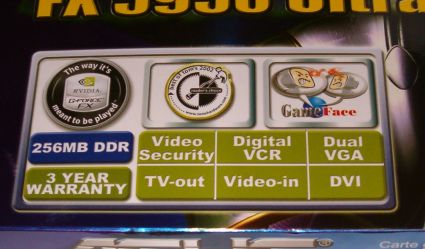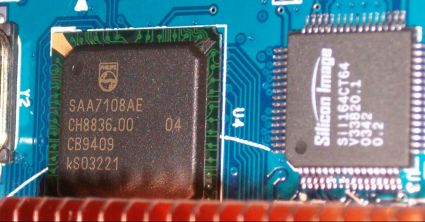ASUS V9980U/TVD

Similar in design to the Radeon XT models' packaging, the box gets a metallic glossy finish and the same style of box art. Again, you're left in no doubt about what you've just bought, it's clear there's an FX 5950 Ultra in there.

A closer look at the box tells you all the extra things you need to know. VIVO capability (like all other 5950 Ultra's that seem to be shipping) and the ASUS extras like Gameface and Video Security. A three year warranty is worth mentioning, ASUS will warranty most of their hardware long after your chosen retailer has stopped caring about it, a good thing indeed. Confidence in buying ASUS has never been low, that's one of the reasons why.

The card itself is a near carbon copy of the older V9950 board that was powered by GeForceFX 5900. The PCB is the same blue colour, the heatsinks, front and back, are identical in every way. Bar some tiny component placement differences, it's the old card with the new GPU.
Click for a picture of the rear of the card (~40KB)
It's a large PCB, like all high-end GeForce FX 59xx products and requires auxiliary power input as you'd expect, but it is a one slot cooler design, deviating sharply from the two slot reference design. I'll save talk on noise for the conclusion. Two small diameter fans provide the cooling for the multi-fin copper heatsinks, themselves topped by what appears to be an aluminium top plate, to prevent stray fingers from being attacked.

Being a card capable of video input, as well as video output, ASUS use the same Philips 7108A video processor as all the other 5950 Ultra board makers, implying a solid recommendation by NVIDIA for their high end reference designs. The Silicon Image Sil164CT64 (part of the 164TX family) provides the DVI interface for the board, a high bandwidth TMDS ASIC, built using the TQFP (thin quad flat pack) packaging process. The 160TX series of TMDS parts are more capable, but more suitable for dual DVI designs, rather than the single DVI channel afforded by the board.
Click for a picture of the card backplane (~15KB)









